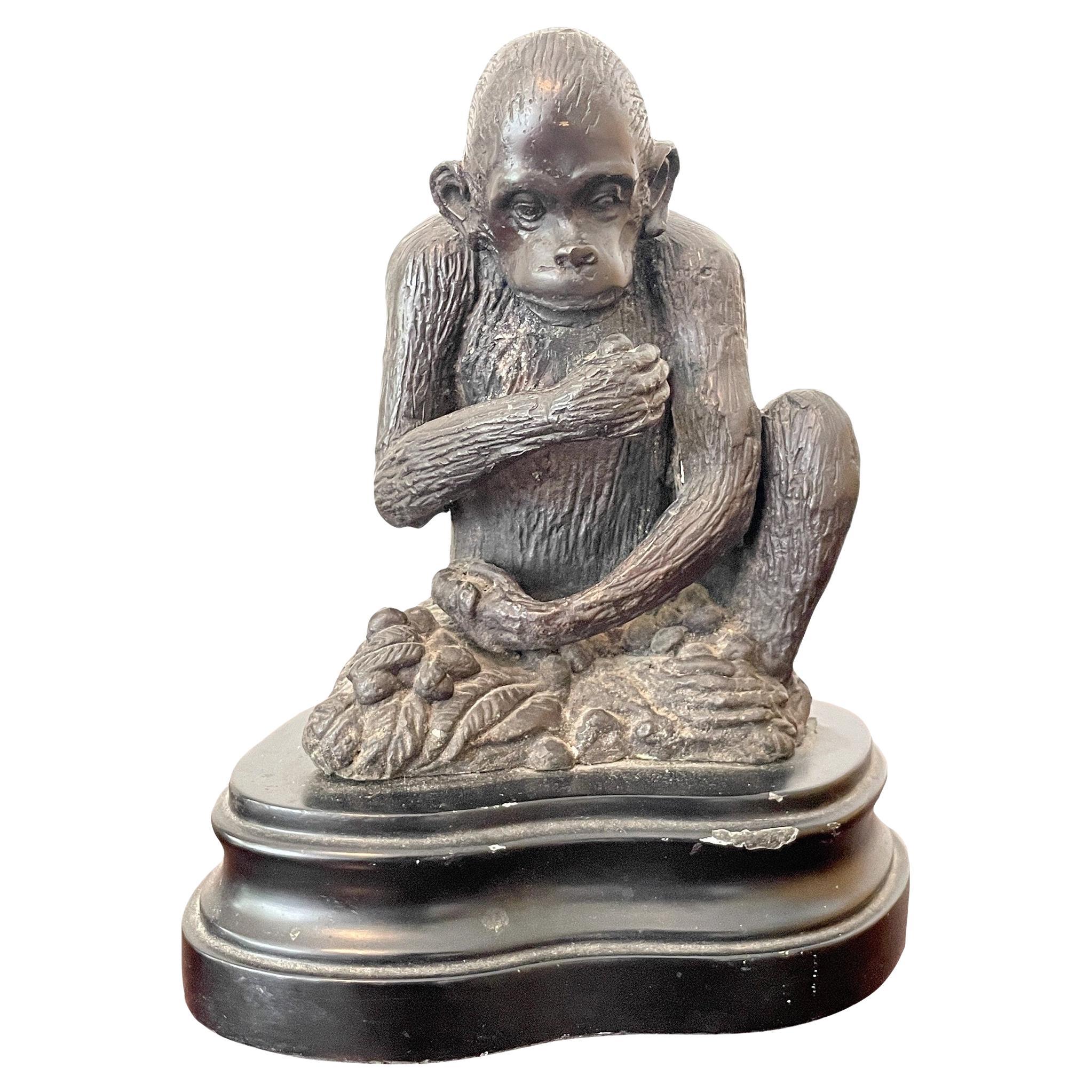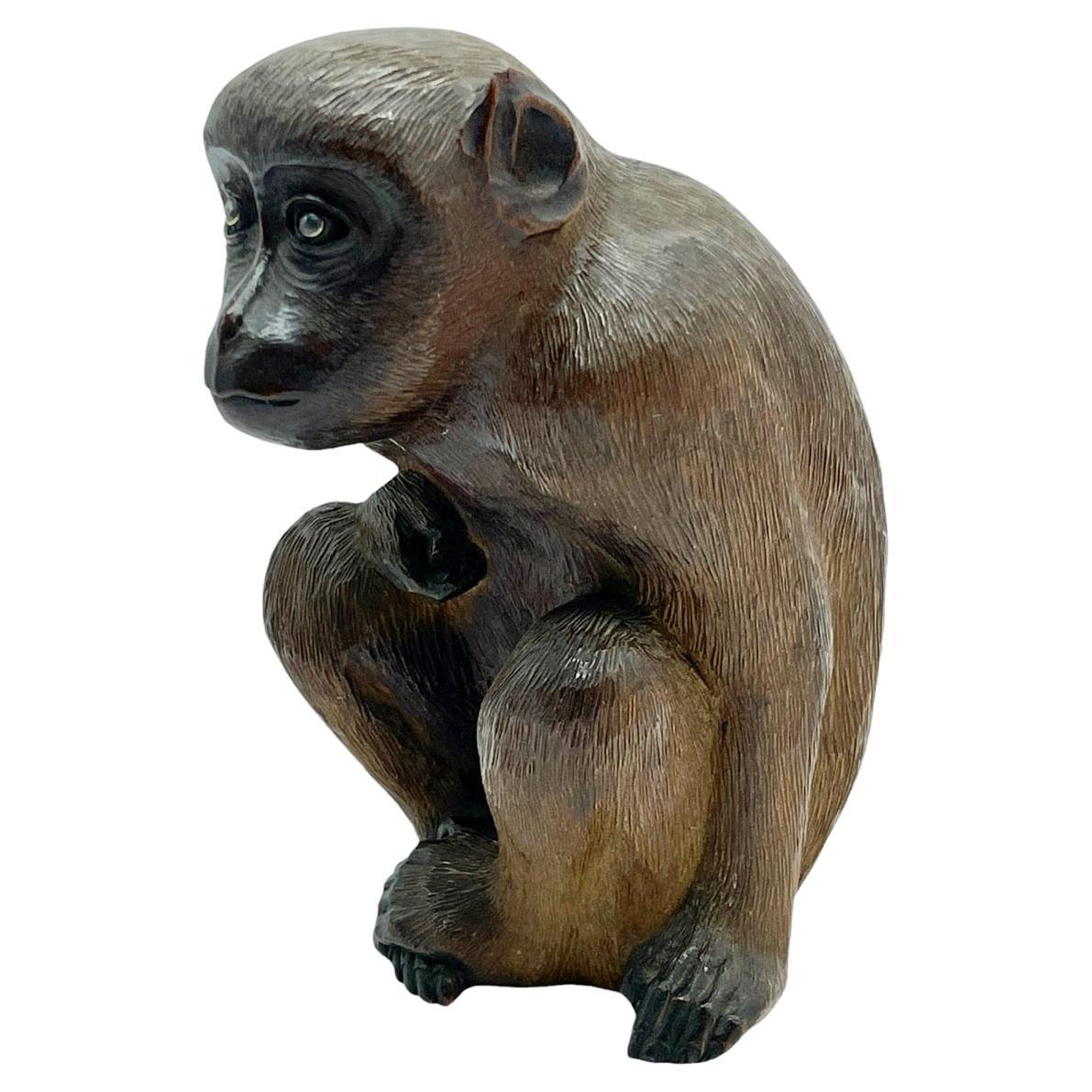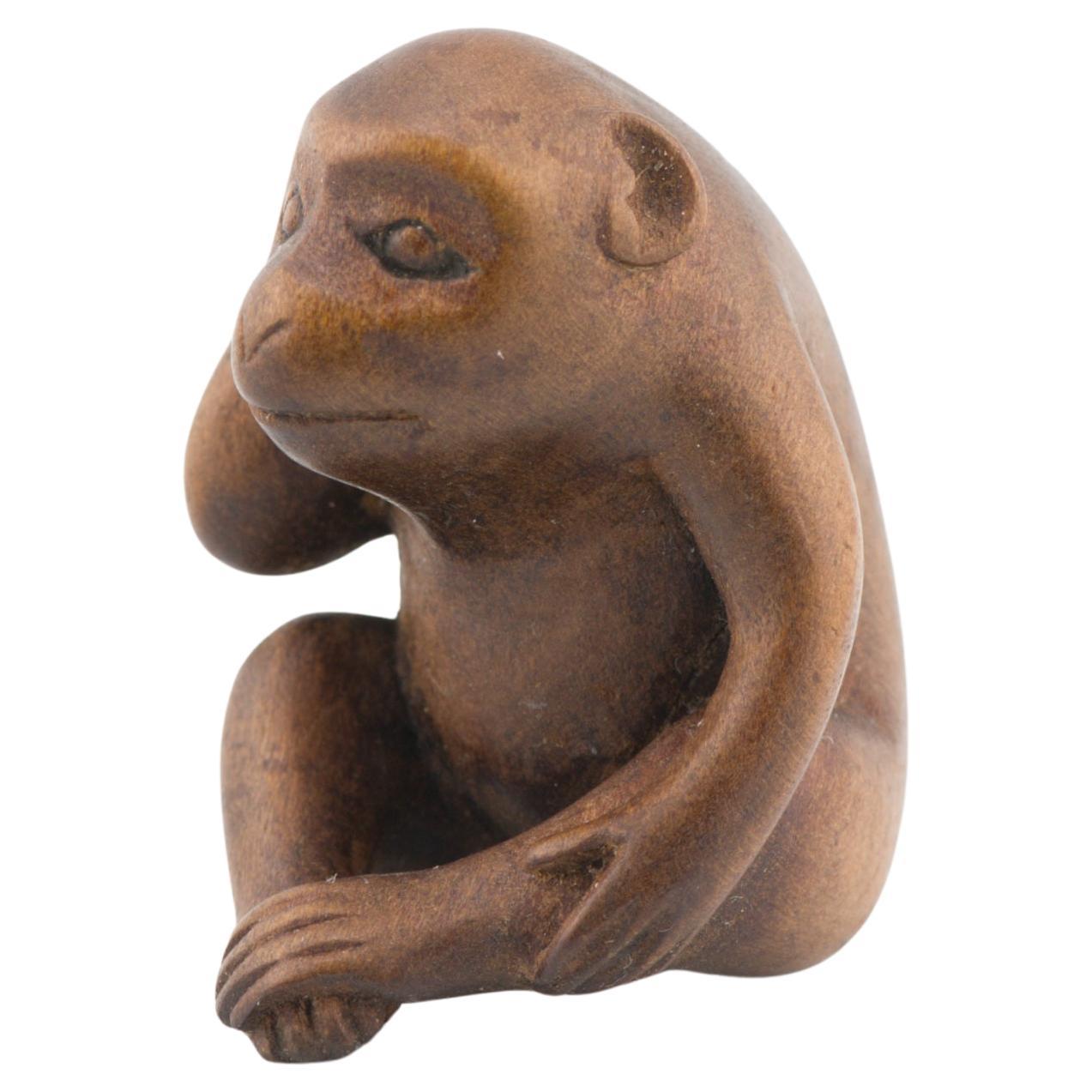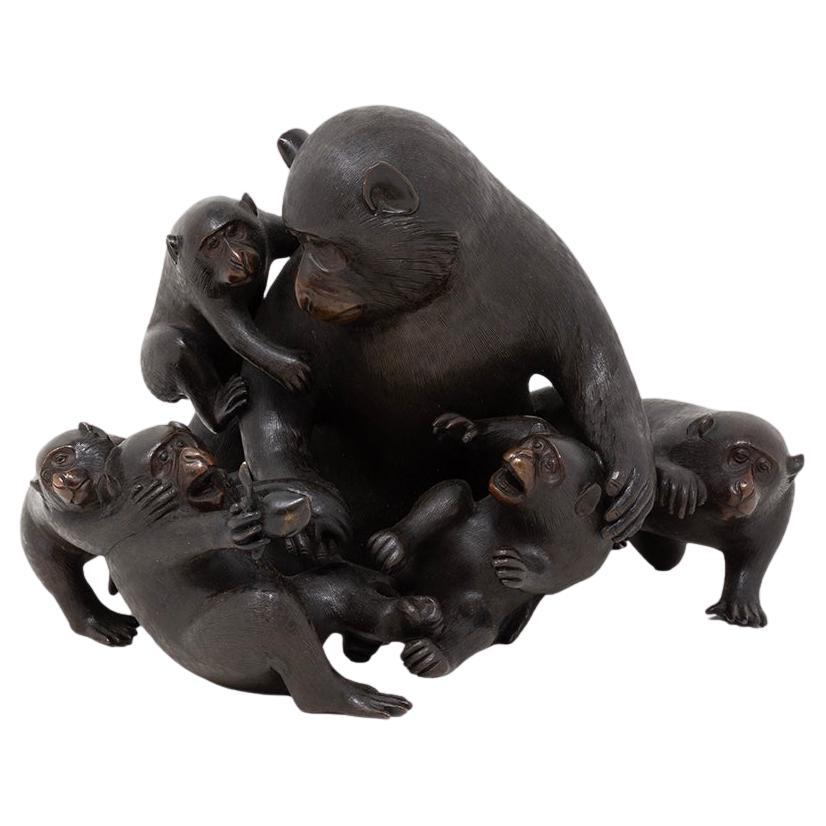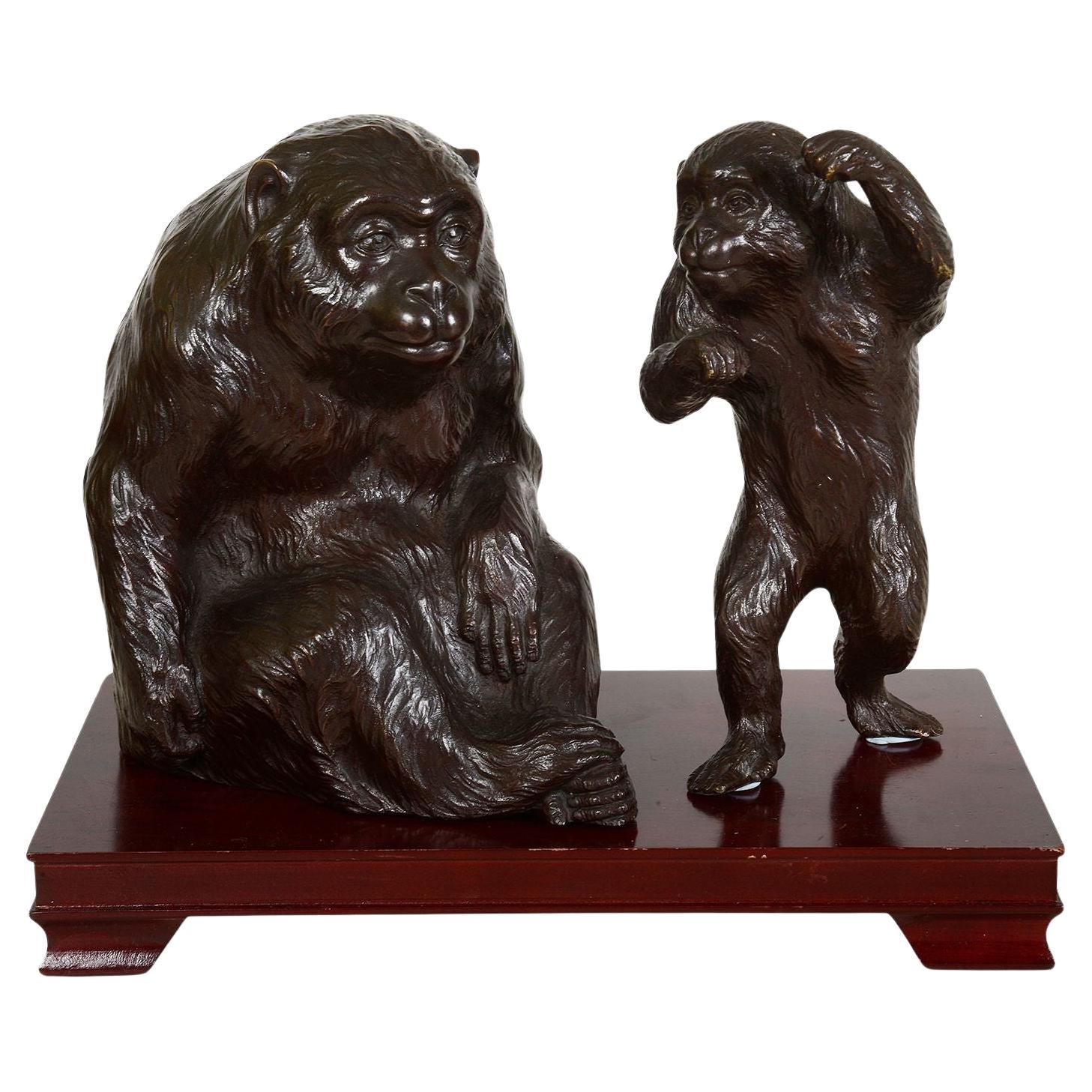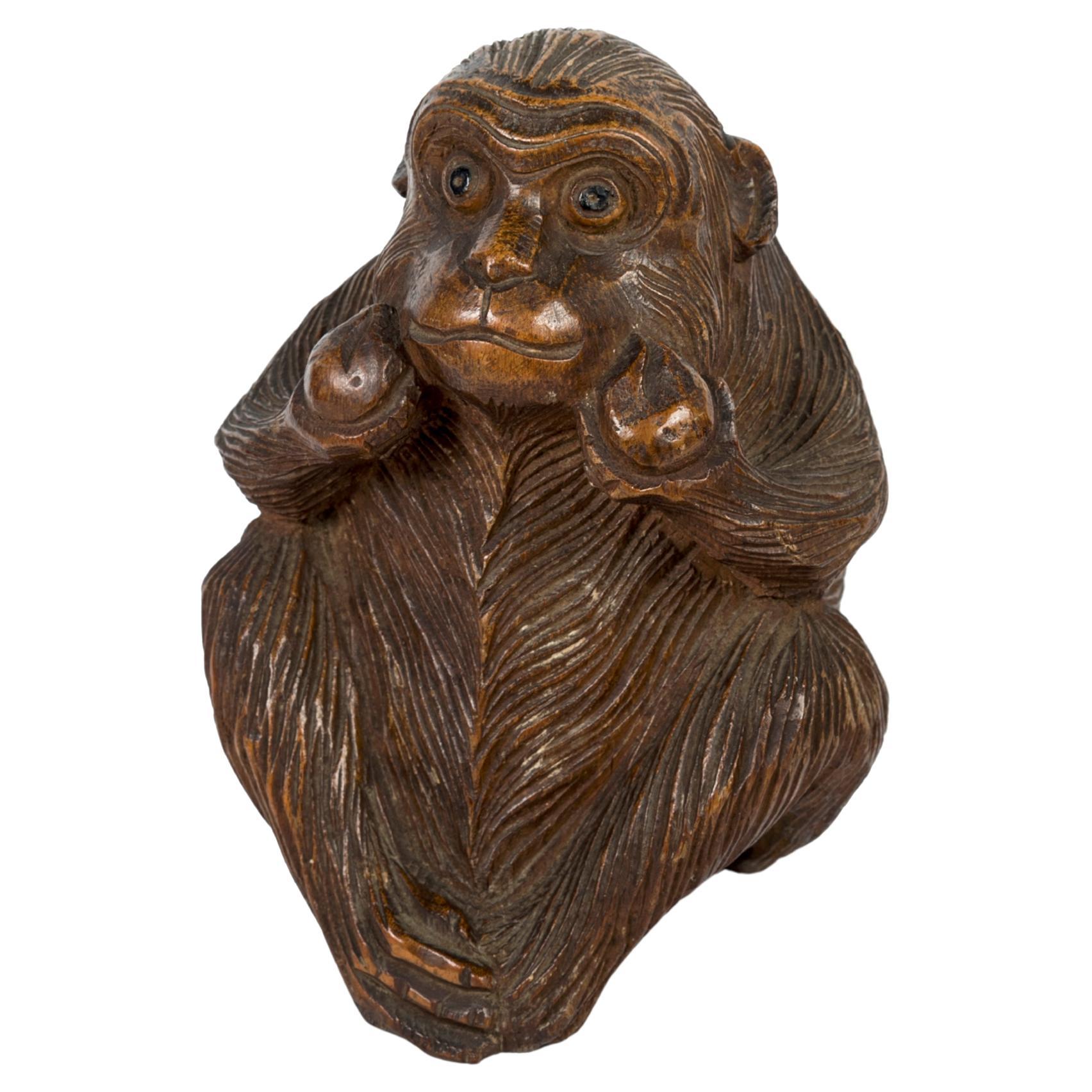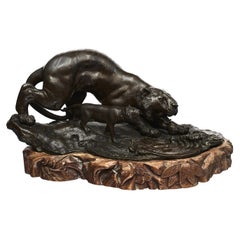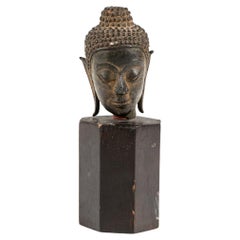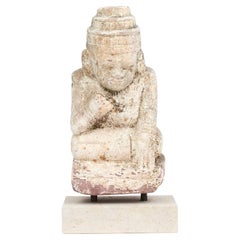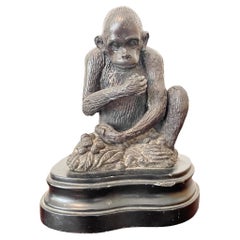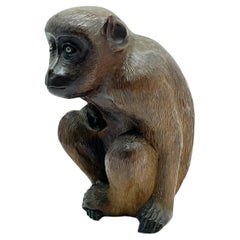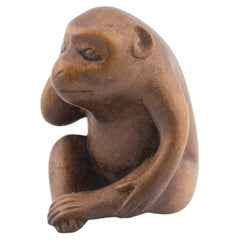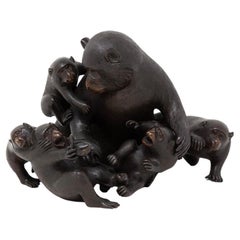Items Similar to Small Meiji Period Japanese Bronze Monkey Sculpture
Want more images or videos?
Request additional images or videos from the seller
1 of 11
Small Meiji Period Japanese Bronze Monkey Sculpture
$736.61
£545.87
€615
CA$1,005.61
A$1,118.70
CHF 586.44
MX$13,670.28
NOK 7,467.56
SEK 7,029.67
DKK 4,682.56
Shipping
Retrieving quote...The 1stDibs Promise:
Authenticity Guarantee,
Money-Back Guarantee,
24-Hour Cancellation
About the Item
Small Japanese bronze sculpture in the form of a monkey with intricate details
Finely crafted in dark-patinated bronze with a rich patina.
Dating from the Meiji period (1868-1912) or earlier.
- Dimensions:Height: 3.55 in (9 cm)Width: 1.97 in (5 cm)Depth: 1.97 in (5 cm)
- Style:Meiji (Of the Period)
- Materials and Techniques:Bronze,Patinated
- Place of Origin:
- Period:
- Date of Manufacture:1868-1912
- Condition:Wear consistent with age and use.
- Seller Location:Kastrup, DK
- Reference Number:Seller: 1056771stDibs: LU1007441061892
About the Seller
5.0
Gold Seller
Premium sellers maintaining a 4.3+ rating and 24-hour response times
Established in 1974
1stDibs seller since 2013
510 sales on 1stDibs
Typical response time: 1 hour
- ShippingRetrieving quote...Shipping from: Kastrup, Denmark
- Return Policy
Authenticity Guarantee
In the unlikely event there’s an issue with an item’s authenticity, contact us within 1 year for a full refund. DetailsMoney-Back Guarantee
If your item is not as described, is damaged in transit, or does not arrive, contact us within 7 days for a full refund. Details24-Hour Cancellation
You have a 24-hour grace period in which to reconsider your purchase, with no questions asked.Vetted Professional Sellers
Our world-class sellers must adhere to strict standards for service and quality, maintaining the integrity of our listings.Price-Match Guarantee
If you find that a seller listed the same item for a lower price elsewhere, we’ll match it.Trusted Global Delivery
Our best-in-class carrier network provides specialized shipping options worldwide, including custom delivery.More From This Seller
View AllJapanese Meiji Period Bronze Tiger with Cub
Located in Kastrup, DK
Japanese Meiji period (1868-1912) patinated bronze sculpture of a tiger with cub.
Mounted on a carved hardwood base decorated with foliage.
High...
Category
Antique 19th Century Japanese Meiji Animal Sculptures
Materials
Bronze
17th Century Thai Buddha Bronze Head
Located in Kastrup, DK
Buddha bronze head from Thailand (1600-1700s), loosely mounted on a black-painted wooden base.
The head has a beautiful and serene expression, while the bronze features a natural, a...
Category
Antique 17th Century Thai Other Religious Items
Materials
Bronze
Thai Buddha Head in Bronze, 17th-18th Century
Located in Kastrup, DK
A small Buddha bronze head, measuring 11 cm in height, originating from Thailand (1600-1700 AD).
It is loosely mounted on a hexagonal wooden base.
This elegant...
Category
Antique 17th Century Thai Other Religious Items
Materials
Bronze
15th Century Burmese Sandstone Seated Monk Sculpture
Located in Kastrup, DK
Seated monk carved in sandstone, originating from a Buddhist pagoda or temple in Burma, dating back to the 15th century.
Discovered as part of an archaeological find after an earthqu...
Category
Antique 15th Century and Earlier Burmese Other Figurative Sculptures
Materials
Sandstone
Pair of Antique Hand-Carved Wooden Temple Lions with Silver Gilding from Siam
Located in Kastrup, DK
Pair of large, majestic temple lions originating from a Buddha temple in Siam (modern-day Thailand).
Hand-carved from wood, they retain their original silver gilding, highlighting in...
Category
Antique Early 19th Century Thai Other Animal Sculptures
Materials
Wood
Large Japanese Tiger in Patinated Bronze, Signed. MEIJI / TAISHO
By Kosai Taisho
Located in Kastrup, DK
Japanese tiger in reddish brown patinated bronze with glass eyes.
Signed.
Made in very high quality on original plinth root wood.
Meiji period 1852-1...
Category
Early 20th Century Japanese Meiji Animal Sculptures
Materials
Bronze
You May Also Like
Miniature Bronze Statue of a Monkey on a Base
Located in Los Angeles, CA
Beautiful miniature bronze statue of a monkey sitting on a base. Great addition to your table tops and interiors.
Category
Vintage 1950s French Other Animal Sculptures
Materials
Bronze
19th Century 'Meiji Period' Japanese Carved Wood Seated Monkey Sculpture
Located in North Miami, FL
19th Century (Meiji Period) Japanese hand-carved wood seated monkey. The eyes are inlaid and made of glass. The fur and details are very realistic. The piece is signed on the bottom ...
Category
Antique 19th Century Japanese Meiji Animal Sculptures
Materials
Glass, Wood
Antique Netsuke Japanese Monkey Thinking Sculpture Meiji Period, 19/20th Century
Located in Amsterdam, Noord Holland
Lovely and very detailed piece. Unsigned. Japan 19th or 20th century.
Provenance: From the collection of Clemens Merkelbach van Enkhuizen, A well known Dutch painter and artist from...
Category
Antique 19th Century Japanese Edo Animal Sculptures
Materials
Porcelain
Japanese Meiji Period Bronze Monkey Group Sculpture Okimono Shosai
Located in Newark, England
Featuring Seven Japanese Macaques
Form our Japanese collection, we are delighted to offer this Japanese Bronze Monkey Group by Shosai. The Japanese Bronze Group displaying a male father monkey and his infants playing around and being mischievous with Persimmon fruit. The monkeys modelled as Japanese macaque monkeys (snow monkey). The bronze okimono is beautifully patinated with a highly lifelike and naturalistic casting signed to the underside Shosai 正齊鋳. The Bronze group dates to the Meiji Period (1868-1912) circa 1885.
Japanese macaque (snow monkey) is a terrestrial Old World monkey species that is native to Japan. They are known as snow monkeys because some live in areas where snow covers the ground for long periods each year hence their nickname. No other non-human primate lives further north or in a colder climate than the snow monkey. Individuals have brownish grey fur, pinkish-red faces, and short tails. Two subspecies are known and their conservation Status is of least concern. In Japan, the species is known as Nihonzaru ニホンザル, 日本 (Japan/Nihon) and saru 猿 (monkey) to distinguish it from other primates, but the Japanese macaque is the only species of monkey in Japan.
The Japanese macaque features heavily in the religion, folklore, and art of Japan, as well as in proverbs and idiomatic expressions in the Japanese language. They are often seen in paintings, block prints and represented in all manner of carvings from Okimono to netsuke. Many of these art forms reside in the world’s most famous museums and collections, some of the most prominent pieces by artists such as Mori Sosen and Kawanabe Kyosai. In Shinto belief (Japan’s indigenous religion/nature religion) legendary mythical beasts known as raiju sometimes appeared as monkeys and kept Raijin (the god of lightning/storms) company. In another well known tale the three wise monkeys who warn people to “see no evil, hear no evil and speak no evil” can be seen depicted in relief over the door of the famous Tosho-gu shrine in Nikko.
Meiji Period was an era of Japanese history that spanned from 1868 to 1912. It was the first half of the Empire of Japan, when the Japanese people began to build a paradigm of a modern, industrialised nation state and emergent great power, influenced by Western countries and aesthetics. As a result of radically different ideas, the changes to Japan were profound and it affected the social structure, politics, economy, military, and foreign relations across the board. The period corresponded to the reign of Emperor Meiji and was preceded by the Keio era and was succeeded by the Taisho era.
Cultural Art during the Meiji Period was of particular interest to the government and they overhauled the art export market which in turn promoted Japanese arts via various world’s fairs, beginning in Vienna at the world fair in 1873. The government heavily funded the fairs and took an active role organising how Japan’s culture was presented to the world including creating a semi-public company named Kiritsu Kosho Kaisha (First Industrial Manufacturing Company). The Kiritsu Kosho Kaisha was used to promote and commercialise exports of Japanese art and established the Hakurankai Jimukyoku (Exhibition Bureau) to maintain quality standards. For the 1876 Centennial International Exhibition in Philadelphia, the Japanese government created a Centennial Office and sent a special envoy to secure space for the 30,000 items that would be displayed. The Imperial Household also took an active interest in arts and crafts, commissioning works by select artists to be given as gifts for foreign dignitaries further emphasising the high quality and importance of Japanese art. Just before the end of the 19th century in 1890, the Teishitsu Gigeiin (Artist to the Imperial Household) system was created to recognise distinguished artists. These artists were selected for their exceptionally high quality wares and talent in their own industry. Over a period of 54 years Seventy artists were appointed, amongst these were ceramicist Makuzu Kozan and cloisonné enamel artist...
Category
Antique Late 19th Century Japanese Meiji Sculptures and Carvings
Materials
Bronze
Meiji period Japanese bronze Monkeys.
Located in Brighton, Sussex
These exquisite Japanese Meiji period sculptures depict two patinated bronze monkeys, showcasing the artistry and craftsmanship of the era. The larger monkey, seated with a contempla...
Category
Antique Late 19th Century Japanese Sculptures and Carvings
Materials
Bronze
Japanese bamboo sculpture of a Monkey holding Longevity Peaches in its two hands
Located in PARIS, FR
Chiseled wood sculpture representing a seated monkey holding peaches of longevity in his hands. The impression of the fur is quite realistic, and its e...
Category
Antique Late 19th Century Japanese Meiji Sculptures and Carvings
Materials
Bamboo
More Ways To Browse
Meiji Period Furniture
Meiji Period
Japanese Bronze Sculptures
Meiji Bronze Sculptures
Gold Monkey Sculpture
Meiji Bronze Animal
Meiji Bronze Animal Sculptures
Meiji Bronze Monkey
Brass Turtle
Bronze Duck
Egret Bird
Glass Lion Sculpture
Italian Horse Head Sculpture
Mid Century Owl 1960s
Monkey Holding
Murano Glass Sculpture Head
African Antelope
Bronze Sculpture Owl
